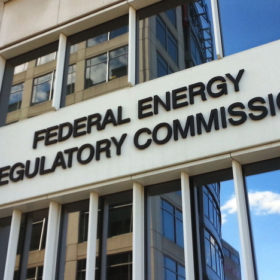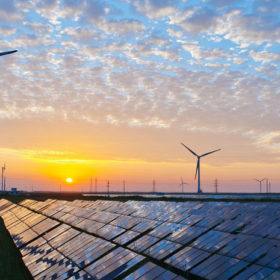Berkeley Lab scientists discover coating to capture near infrared light
A team of researchers the United States Department of Energy’s Lawrence Berkeley National Laboratory has discovered a method of coating particles with organic dye, which can capture near infrared light, a breakthrough which, according to the researchers, could greatly boost solar cell efficiency by capturing a larger section of the light spectrum.
US: California researchers convert waste heat into electricity
Scientists from the University of California, Riverside, have developed thermoelectric devices, which can transform low-level waste heat into electricity. The scientists theorize that these devices could be used to boost a solar PV system’s output, harnessing heat as well as light from the sun.
US regulators open markets to energy storage
As the conclusion of a 15-month rule-making, the Federal Energy Regulatory Commission (FERC) will require grid operators to value the contributions of energy storage, and begins a process to look at how aggregated distributed energy resources can compete in wholesale markets.
Stem closes $80 million funding round
The energy storage company will receive the money from three different investors, including the Ontario Teachers’ Pension Plan.
Berkeley Lab researchers develop perovskite ‘smart window’ material
Scientists from the renowned U.S. Berkeley Laboratory have discovered a perovskite material, which can be used in photovoltaic glass applications, and can be switched between transparent and non-transparent without diminishing its electronic properties.
Seasonal patterns show a need for more solar in the U.S. electricity mix
An abundance of hydroelectric power and wind is pushing up renewable energy in the spring months, but there is a need for more power during the summer peak, as well as issues with the geographic location of resources.
California is closing in on its 2020 renewable energy mandate
The latest report from the California Energy Commission shows that the state is already getting 30% of its power from renewable energy (excluding large hydro) with solar providing more than a third of this.
US researchers model alternatives to farmland for PV deployment
A team of scientists from the University of California has published a study, which says the state could meet 100% of its electricity demand up to 2025 from PV, without having to deploy a single panel on productive farmland or protected natural areas.
Utilities are increasingly planning for energy storage (w/ charts)
GTM Research reports that utilities in 15 states are incorporating energy storage into their long-term plans, as energy storage deployment reached a relatively even keel during Q3 2017.
All in: Utility PG&E signs energy storage deals totaling 165 MW
The most recent contracts, which still need to be approved by California regulators, are part of a state-mandated goal of adding 580 MW of storage by 2020.








